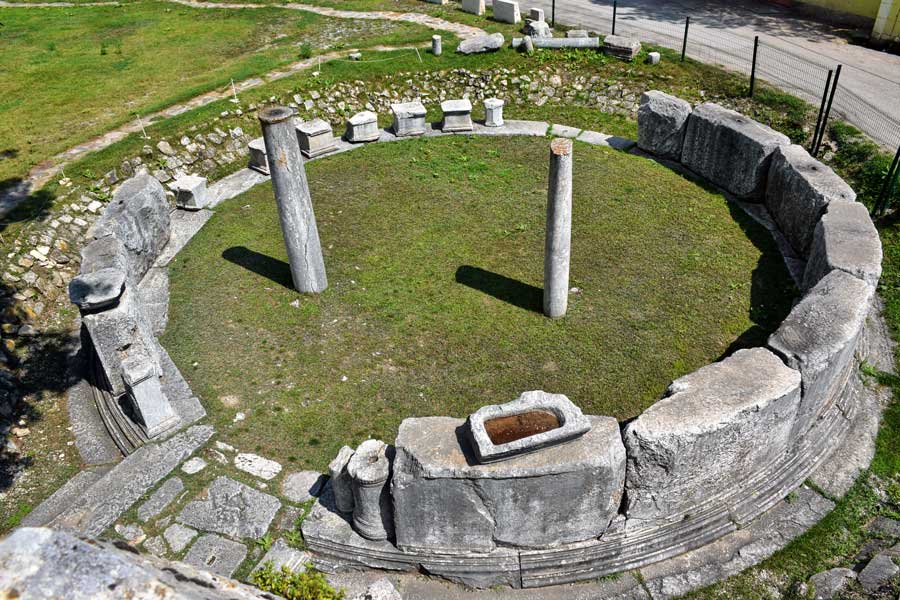Aizanoi, regretfully, doesn’t make
headline news - yet. Several years ago, I watched a program on TRT TV that
showed many imposing monuments from Roman times at this site which was
otherwise unknown to me. After that, I haven’t heard anything about further excavations or remarkable finds until today. The massive entrance to the
As always, I like to put things in context. Looking at the map, Aizanoi lies roughly
The
The base of the podium of this temple is covered with vaults – an unusual and unique occurrence in Roman Anatolia. Archaeologists concluded that this was a double temple, with the one dedicated to Zeus beckoning us, and a vaulted underground space where the cult of Cybele was practiced. This goddess was worshipped under the name Metre Steunene in Aizanoi. However, more recent in-depth research has revealed that this temple could not be devoted to both Zeus and Cybele. Consequently, the underground space is thought to be a prophecy center or a mere storage room. Whatever its purpose, it is an odd construction.
Opposite the temple are the remains of a small Bouleuterion, but its history remains unknown. The same problem applies to the Heroon and the Agora and surrounding Stoa because the remains were either reused on other structures or disappeared under the modern houses.
Aizanoi counts remains of many monuments, among which a rare combined theater-stadium complex linked together by a large stage building. Its construction started shortly after 160 AD and was completed halfway through the 3rd century AD. Several inscriptions have been found in the stadium and the theater, and they confirm that the same M. Apuleius contributed substantially to building this complex.
The excavations done between 1970 and 2011 have exposed two public Baths, a Gymnasium, a Macellum, five bridges, an ancient dam, a colonnaded street, and a large necropolis.
One of the Baths stood between the theatre-stadium complex and the
The second Turkish-style

[Picture from Arkeonews]
The circular Macellum of Aizanoi was built simultaneously with the
first
During recent excavations, remains of a colonnaded street have been
uncovered over a length of
The Roman city of Aizanoi occupied both sides of the
The main bridge displays an inscription on the pedestal of the railing
and tells us it was opened in September 157 AD. An illustrating relief shows
the sea voyage undertaken by M. Apuleius as he paid for the bridge’s construction. It may be
essential to mention that M. Apuleius represented Aizanoi in the Panhellion Union held in
The large necropolis of Aizanoi reflects the size of the city. It includes a wide array of tombs, including door-shaped Phrygian tombs from the 2nd century AD. The typical tomb doors, which often bore the name of the deceased or donor, symbolized the passage to the other world. These tombstones usually showed bulls, lions, or eagles for the men and baskets of wool or a mirror for the women.
In one of the tombs, archaeologists made a remarkable discovery. They found a “lykion,” a typical jar made to contain a precious salve to treat eye dryness which frequently occurred to soldiers traversing large stretches of dry lands or deserts (see: Eye cream from antiquity).

More recently, they unearthed a jug containing an exceptional hoard of 651 silver coins from the days of Emperor Augustus. Remarkably, 439 coins were standard Roman silver denarii, but 212 were cistophorus coins typically from Pergamon. This is not surprising considering that Aizanoi was ruled by Pergamon until the kingdom was bequeathed to the Romans in 133 BC.
Aizanoi started minting its first coins in the second and first
centuries BC. During the days of the












